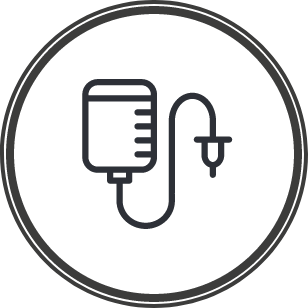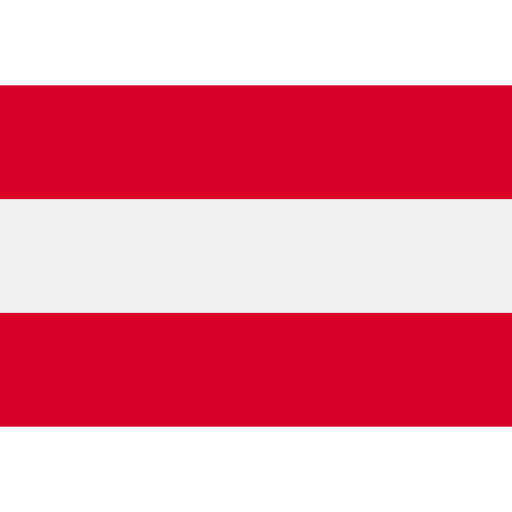Das Management von CKD-assoziiertem Pruritus sollte ein wesentlicher Bestandteil der Behandlung für alle Patienten sein, die sich einer Hämodialyse unterziehen und an CKD-assoziierten Pruritus leiden.1
Ein effektives Management des CKD-assoziierten Pruritus kann für die Patienten einen Unterschied ausmachen.
Das Management von CKD-aP kann eine Herausforderung sein, aber es ist eine Herausforderung, die es definitiv wert ist, angenommen zu werden. Der Behandlungsansatz sollte vielschichtig und auf die Ziele des jeweiligen Patienten zugeschnitten sein.1,2

Einer der ersten Schritte in der Behandlung des CKD-assoziierten Pruritus besteht in der Regel darin, eine adäquate Dialyse sicherzustellen, indem die Dialysedosis (Kt/V) erhöht, das Calcium-Phosphat-Gleichgewicht normalisiert und der PTH-Spiegel (Parathormon) korrekt eingestellt wird1
Kt/V erhöhen
Es wird angenommen, dass diese Strategie die Konzentration pruritogener Substanzen im Körper verringert. Allerdings ist kein Kt/V-Zielwert verfügbar, der als Orientierungshilfe bei der Therapie dienen könnte.1,3,4
Calcium-Phosphat-Gleichgewicht normalisieren
Die Einstellung des Phosphorspiegels wurde von 60 % der ärztlichen Direktoren in der DOPPS-Studie als wichtigste Behandlungsoption angesehen; Grund hierfür ist wahrscheinlich, dass Calcium- und Phosphorspiegel bei Dialysepatienten oft erhöht sind.2,5,6 Doch auch in diesem Fall sehen die Leitlinien keinen Zielwert für die Behandlung vor.1,3,4
PTH-Spiegel korrekt einstellen
PTH führt zu einer Reabsorption von Phosphor in den Nierentubuli und reguliert die Phosphorkonzentration im Blut. Bei Dialysepatienten, die unter Juckreiz leiden, werden häufig deutlich höhere PTH-Werte festgestellt als bei Patienten ohne Juckreiz.2,6
Trotz der oben genannten Begründungen reichen diese Behandlungsoptionen angesichts der multifaktoriellen Pathogenese des CKD-assoziierten Pruritus möglicherweise nicht aus. Eine multivariate Analyse von 6.256 Patienten aus der DOPPS-Studie fand keinen Zusammenhang zwischen CKD-assoziiertem Pruritus und Phosphor, Calcium, Calcium-Phosphor-Produkt, PTH oder Hämodiafiltration.5
Patientenmerkmale nach Grad, in dem die Patienten durch juckende Haut belastet werden
Nach: Rayner et al. 20175
Angaben als Mittelwert (SD), Median [Interquartilsabstand] oder Spaltenanteil.
aHämodiafiltration ohne USA und Kanada, da das Verfahren dort nicht angewendet wird (n = 6024).
Obwohl Patienten häufig Antihistaminika einnehmen, gibt es keine Belege aus randomisierten kontrollierten Studien, die den Einsatz dieser Medikamentengruppe unterstützen.1,4
Der wahrgenommene Nutzen von Antihistaminika ist wahrscheinlich eher auf eine Sedierung als auf eine echte juckreizstillende Wirkung zurückzuführen, da viele nicht-histaminerge Neuronen an den Juckreiz erzeugenden Nervenbahnen beteiligt sind.5
Die langfristige Einnahme von sedierenden Antihistaminika kann die
Patienten zu Demenz prädisponieren und sollte außerhalb der Palliativmedizin vermieden werden.1
Es existieren nur begrenzte Daten, welche den Gebrauch von topischen Korticosteroide bei CKD-assoziiertem Pruritus unterstützen. Darüber hinaus ist die Einnahme von Kortikosteroiden nicht über einen längeren Zeitraum vorgesehen.6
Kortikosteroide wirken nicht direkt juckreizhemmend. Es wird vermutet, dass sie durch die erzielte Verringerung der Hautentzündung eine positive Wirkung auf den Juckreiz haben.6
*Treatment selection dependent on the availability of difelikefalin.
Zur Erkennung und Beurteilung des CKD-assoziierten Pruritus sollten die Patienten alle 3 Monate nach Juckreiz gefragt und gebeten werden, die Intensität des Juckreizes auf der Worst Itch Intensity – Numerical Rating Scale (WI-NRS) zu bewerten.
CKD-aP erkennen
In diesem Video wird beschrieben, wie der WI-RNS eingesetzt wird, um CKD-aP durch die Befragung der Patienten zu erkennen, den Schweregrad des Juckreizes zu beurteilen und anhand von Patientenprofilen die Auswirkungen auf die Lebensqualität der Patienten einzuschätzen.
CKD-aP kann lebensverändernde Folgen für Ihre Hämodialysepatienten haben. Lassen Sie sie nicht
im Stillen leiden.
- Millington G, Collins A, Lovell C, et al. British Association of Dermatologists’ guidelines for the investigation and management of generalised pruritus in adults without an underlying dermatosis, 2018. Br J Dermatol. (2018);178(1):34–60.
- Verduzco H, Shirazian S. CKD-associated Pruritus: new insights into diagnosis, pathogenesis, and management. Kidney Int Rep. (2020);5(9):1387–1402.
- Rayner H, Larkina M, Wang M, et al. International comparisons of prevalence, awareness, and treatment of pruritus in people on hemodialysis. Clin J Am Soc Nephrol. (2017);12:2000–2007.
- Mathur V, Lindberg J, Germain M, et al. A longitudinal study of uremic pruritus in hemodialysis patients. Clin J Am Soc Nephrol. (2010);5:1410–1419.
- Combs S, Teixeira J, Germain M. Pruritus in Kidney Disease. Semin Nephrol. (2015);35(4):383–391.
- Westby EP, Purdy KS, Tennankore KK. A review of the management of uraemic pruritus: current perspectives and future directions. Itch. (2020);5:e38. doi: 10.1097/itx.0000000000000038.
























